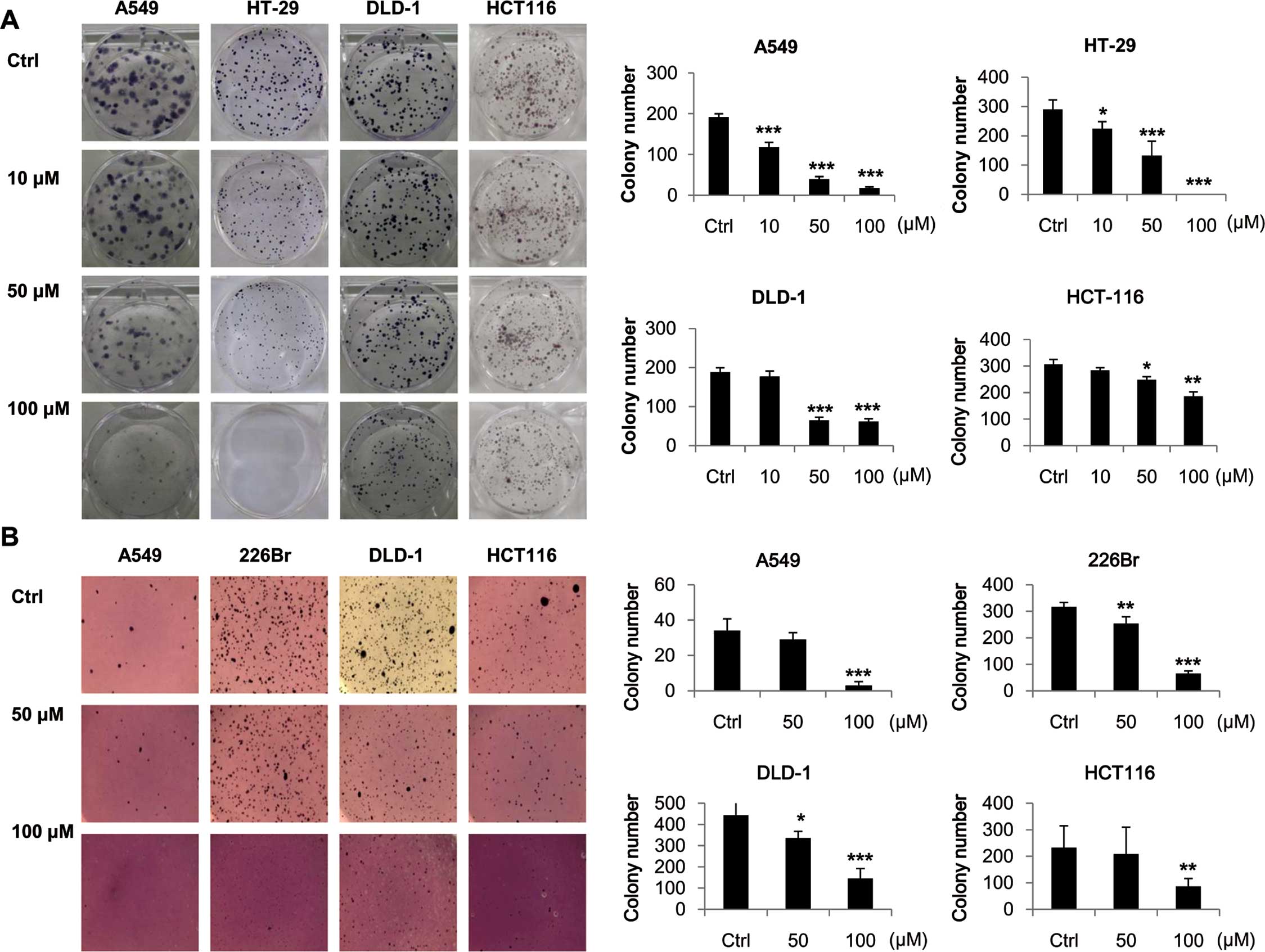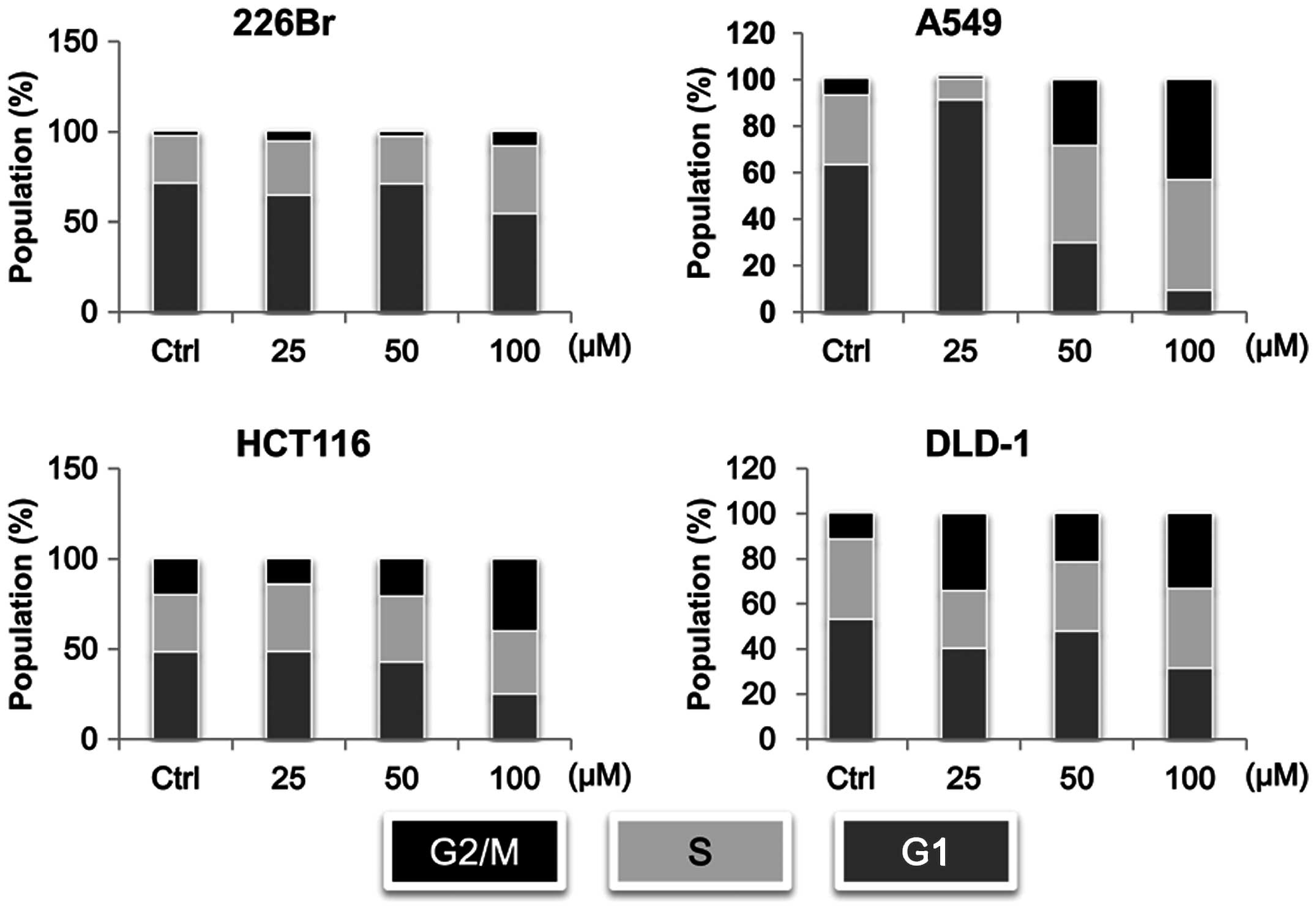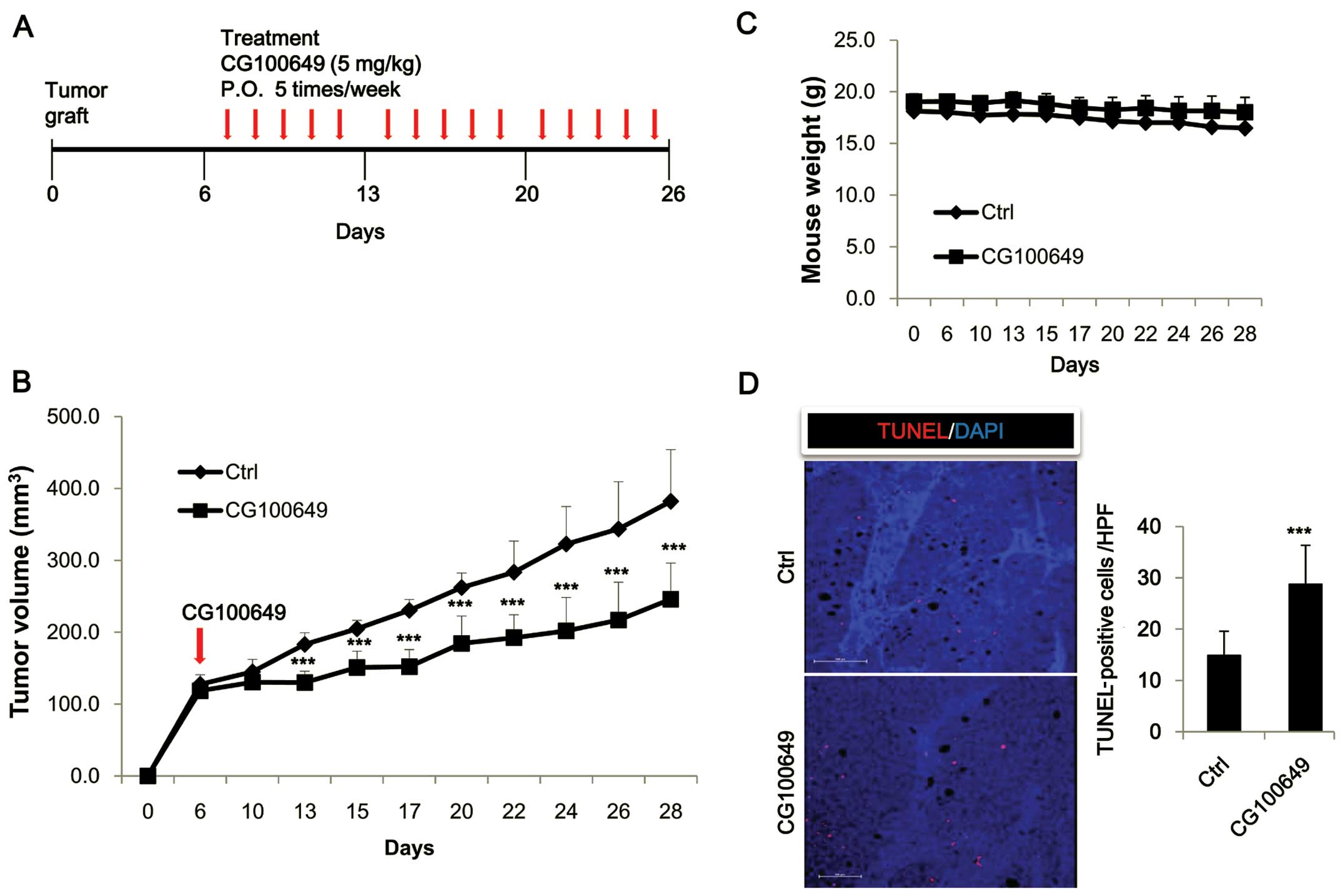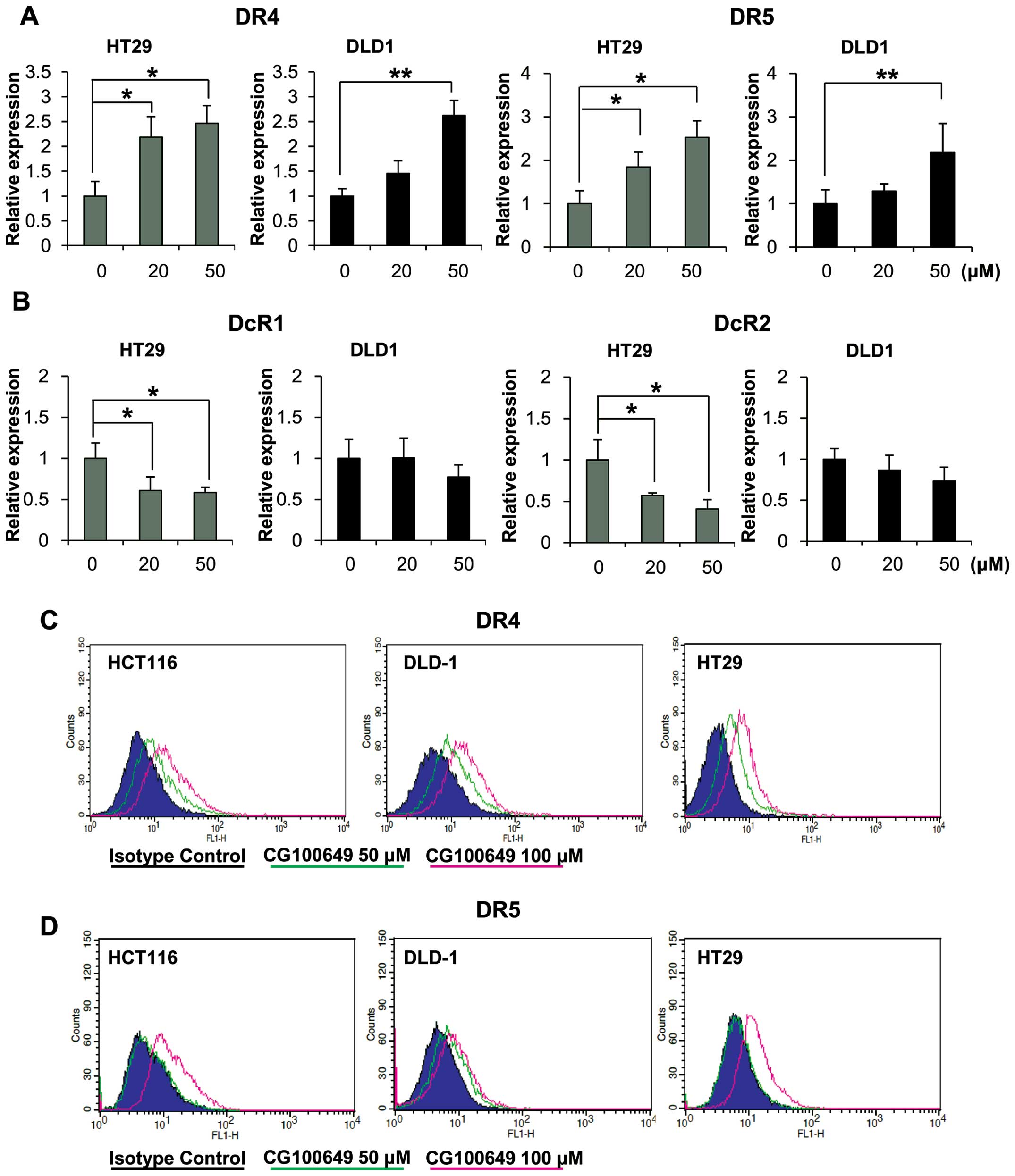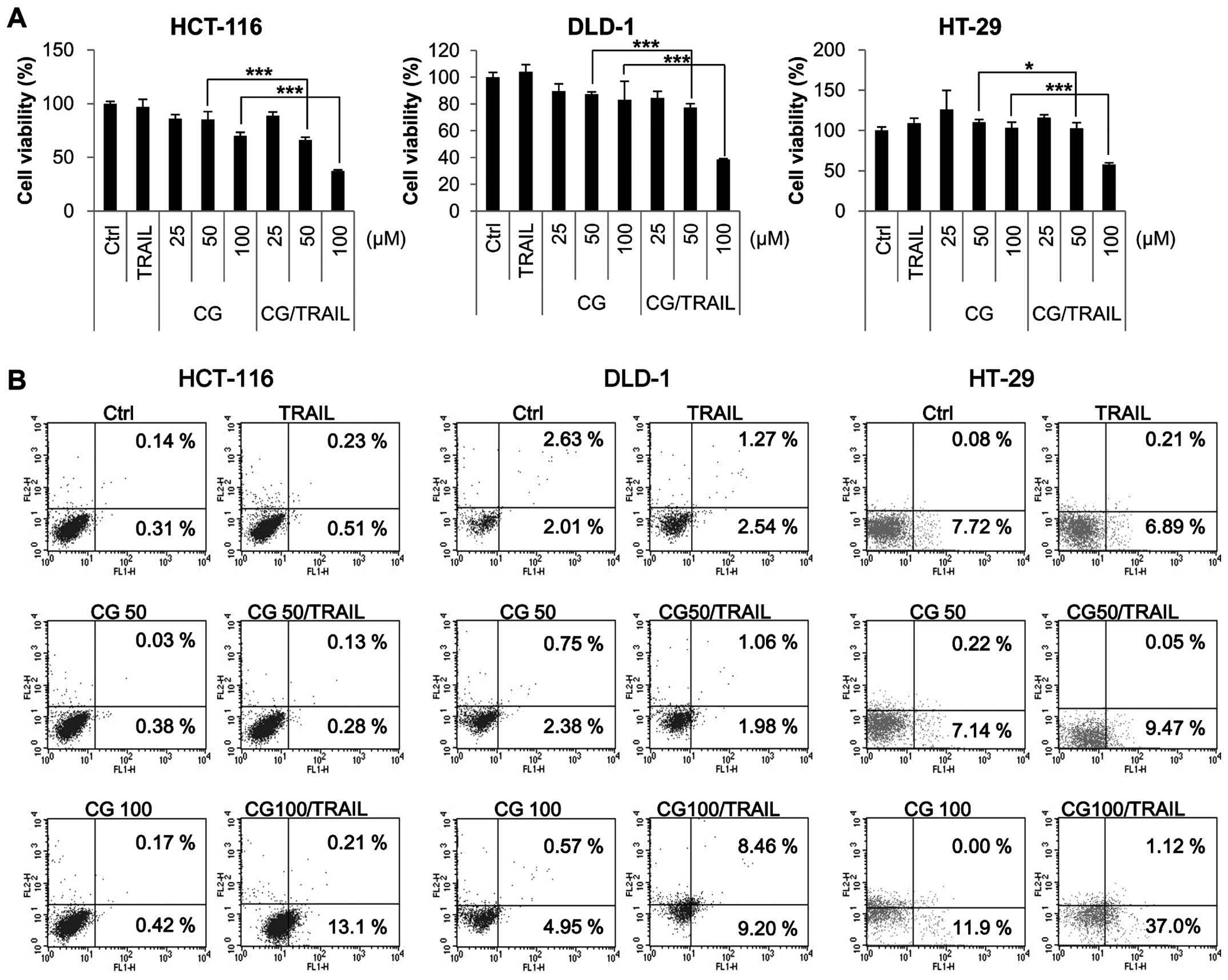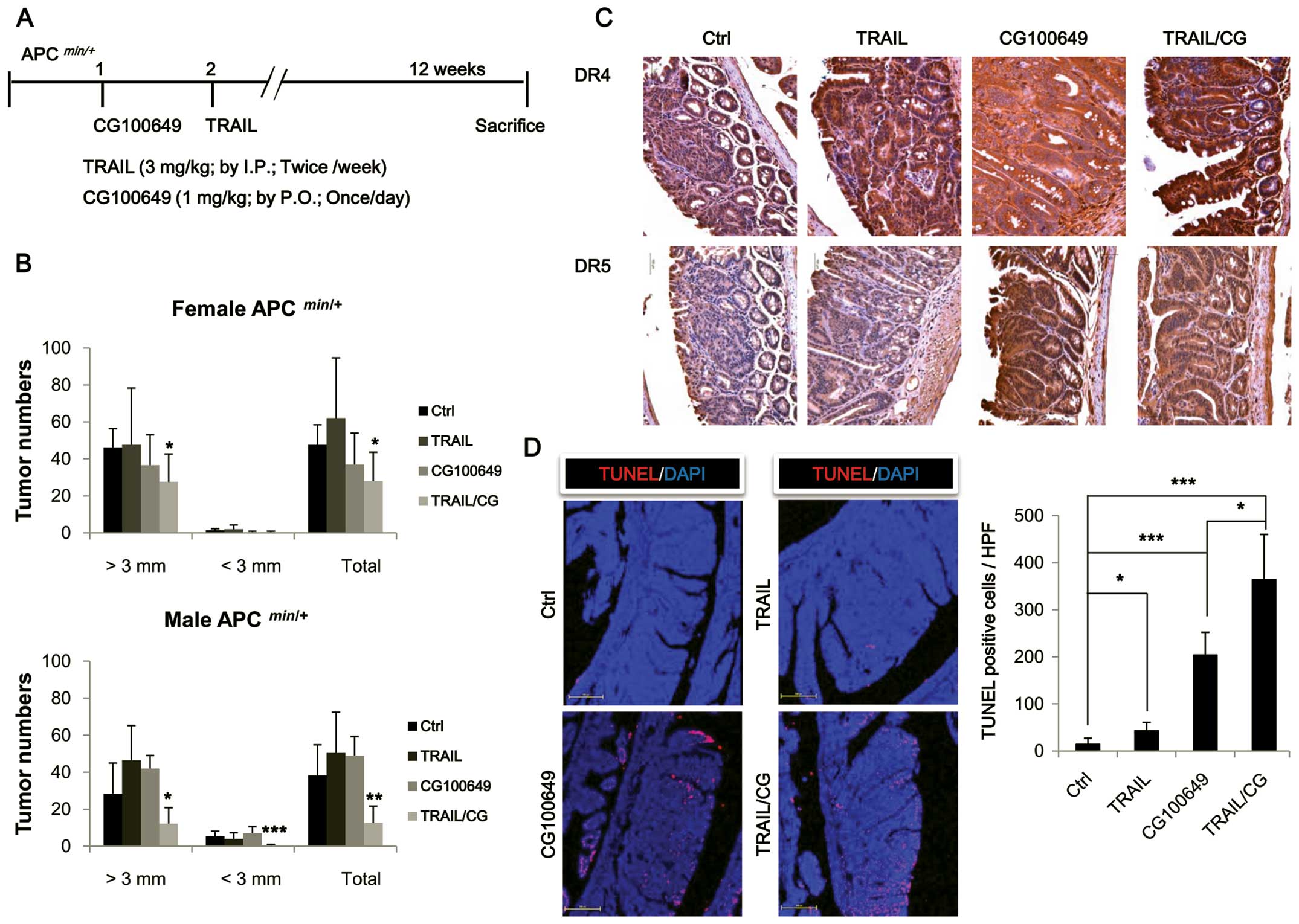|
1
|
Siegel R, Naishadham D and Jemal A: Cancer
statistics, 2013. CA Cancer J Clin. 63:11–30. 2013. View Article : Google Scholar : PubMed/NCBI
|
|
2
|
Kim MK, Kang YJ, Kim DH, et al: A novel
hydroxamic acid derivative, MHY218, induces apoptosis and cell
cycle arrest through downregulation of NF-κB in HCT116 human colon
cancer cells. Int J Oncol. 44:256–264. 2014.
|
|
3
|
Gurpinar E, Grizzle WE and Piazza GA:
NSAIDs inhibit tumorigenesis, but how? Clin Cancer Res.
20:1104–1113. 2014. View Article : Google Scholar :
|
|
4
|
Coghill AE, Newcomb PA, Chia VM, et al:
Pre-diagnostic NSAID use but not hormone therapy is associated with
improved colorectal cancer survival in women. Br J Cancer.
104:763–768. 2011. View Article : Google Scholar : PubMed/NCBI
|
|
5
|
Skarke C, Alamuddin N, Lawson JA, Cen L,
Propert KJ and Fitzgerald GA: Comparative impact on prostanoid
biosynthesis of celecoxib and the novel nonsteroidal
anti-inflammatory drug CG100649. Clin Pharmacol Ther. 91:986–993.
2012. View Article : Google Scholar : PubMed/NCBI
|
|
6
|
Shankar S, Singh TR, Fandy TE, Luetrakul
T, Ross DD and Srivastava RK: Interactive effects of histone
deacetylase inhibitors and TRAIL on apoptosis in human leukemia
cells: Involvement of both death receptor and mitochondrial
pathways. Int J Mol Med. 16:1125–1138. 2005.PubMed/NCBI
|
|
7
|
Shankar S, Ganapathy S, Chen Q and
Srivastava RK: Curcumin sensitizes TRAIL-resistant xenografts:
molecular mechanisms of apoptosis, metastasis and angiogenesis. Mol
Cancer. 7:162008. View Article : Google Scholar : PubMed/NCBI
|
|
8
|
Shankar S and Srivastava RK: Enhancement
of therapeutic potential of TRAIL by cancer chemotherapy and
irradiation: mechanisms and clinical implications. Drug Resist
Updat. 7:139–156. 2004. View Article : Google Scholar : PubMed/NCBI
|
|
9
|
Ren YG, Wagner KW, Knee DA, Aza-Blanc P,
Nasoff M and Deveraux QL: Differential regulation of the TRAIL
death receptors DR4 and DR5 by the signal recognition particle. Mol
Biol Cell. 15:5064–5074. 2004. View Article : Google Scholar : PubMed/NCBI
|
|
10
|
Liu XS, Zhu Y, Han WN, et al: Preparation
and characterization of a set of monoclonal antibodies to TRAIL and
TRAIL receptors DR4, DR5, DcR1, and DcR2. Hybrid Hybridomics.
22:121–125. 2003. View Article : Google Scholar : PubMed/NCBI
|
|
11
|
Krishan A: Rapid flow cytofluorometric
analysis of mammalian cell cycle by propidium iodide staining. J
Cell Biol. 66:188–193. 1975. View Article : Google Scholar : PubMed/NCBI
|
|
12
|
Oh SH, Woo JK, Jin Q, et al:
Identification of novel antiangiogenic anticancer activities of
deguelin targeting hypoxia-inducible factor-1 alpha. Int J Cancer.
122:5–14. 2008. View Article : Google Scholar
|
|
13
|
Oh SH, Woo JK, Yazici YD, et al:
Structural basis for depletion of heat shock protein 90 client
proteins by deguelin. J Natl Cancer Inst. 99:949–961. 2007.
View Article : Google Scholar : PubMed/NCBI
|
|
14
|
Han JY, Oh SH, Morgillo F, et al:
Hypoxia-inducible factor 1α and antiangiogenic activity of
farnesyltransferase inhibitor SCH66336 in human aerodigestive tract
cancer. J Natl Cancer Inst. 97:1272–1286. 2005. View Article : Google Scholar : PubMed/NCBI
|
|
15
|
Yamanaka Y, Shiraki K, Inoue T, et al:
COX-2 inhibitors sensitize human hepatocellular carcinoma cells to
TRAIL-induced apoptosis. Int J Mol Med. 18:41–47. 2006.PubMed/NCBI
|
|
16
|
Martin S, Phillips DC, Szekely-Szucs K,
Elghazi L, Desmots F and Houghton JA: Cyclooxygenase-2 inhibition
sensitizes human colon carcinoma cells to TRAIL-induced apoptosis
through clustering of DR5 and concentrating death-inducing
signaling complex components into ceramide-enriched caveolae.
Cancer Res. 65:11447–11458. 2005. View Article : Google Scholar : PubMed/NCBI
|
|
17
|
Cuddihy AR and O’Connell MJ: Cell-cycle
responses to DNA damage in G2. Int Rev Cytol. 222:99–140. 2003.
View Article : Google Scholar
|
|
18
|
Zhang XH, Zou ZQ, Xu CW, Shen YZ and Li D:
Myricetin induces G2/M phase arrest in HepG2 cells by inhibiting
the activity of the cyclin B/Cdc2 complex. Mol Med Rep. 4:273–277.
2011.PubMed/NCBI
|
|
19
|
Nicolini F, Burmistrova O, Marrero MT, et
al: Induction of G2/M phase arrest and apoptosis by the
flavonoid tamarixetin on human leukemia cells. Mol Carcinog.
53:939–950. 2014.
|
|
20
|
Tang FY, Pai MH, Kuo YH and Wang XD:
Concomitant consumption of lycopene and fish oil inhibits tumor
growth and progression in a mouse xenograft model of colon cancer.
Mol Nutr Food Res. 56:1520–1531. 2012. View Article : Google Scholar : PubMed/NCBI
|
|
21
|
Lacour S, Hammann A, Wotawa A, Corcos L,
Solary E and Dimanche-Boitrel MT: Anticancer agents sensitize tumor
cells to tumor necrosis factor-related apoptosis-inducing
ligand-mediated caspase-8 activation and apoptosis. Cancer Res.
61:1645–1651. 2001.PubMed/NCBI
|
|
22
|
Xu LH, Deng CS, Zhu YQ, Liu SQ and Liu DZ:
Synergistic antitumor effect of TRAIL and doxorubicin on colon
cancer cell line SW480. World J Gastroenterol. 9:1241–1245.
2003.PubMed/NCBI
|
|
23
|
Inoue T, Anai S, Onishi S, et al:
Inhibition of COX-2 expression by topical diclofenac enhanced
radiation sensitivity via enhancement of TRAIL in human prostate
adenocarcinoma xenograft model. BMC Urol. 13:12013. View Article : Google Scholar : PubMed/NCBI
|
|
24
|
Sheridan JP, Marsters SA, Pitti RM, et al:
Control of TRAIL-induced apoptosis by a family of signaling and
decoy receptors. Science. 277:818–821. 1997. View Article : Google Scholar : PubMed/NCBI
|
|
25
|
Pan G, Ni J, Wei YF, Yu G, Gentz R and
Dixit VM: An antagonist decoy receptor and a death
domain-containing receptor for TRAIL. Science. 277:815–818. 1997.
View Article : Google Scholar : PubMed/NCBI
|
|
26
|
Abdulghani J and El-Deiry WS: TRAIL
receptor signaling and therapeutics. Expert Opin Ther Targets.
14:1091–1108. 2010. View Article : Google Scholar : PubMed/NCBI
|



